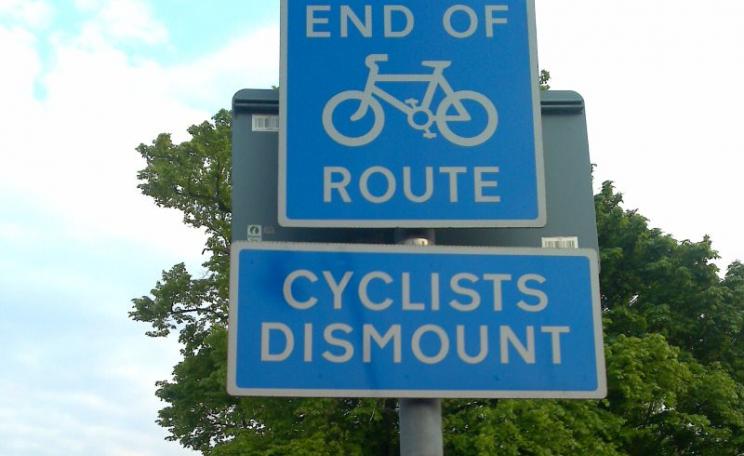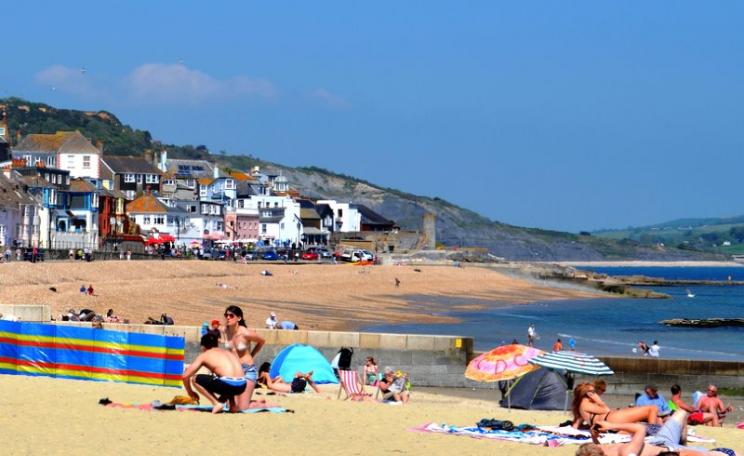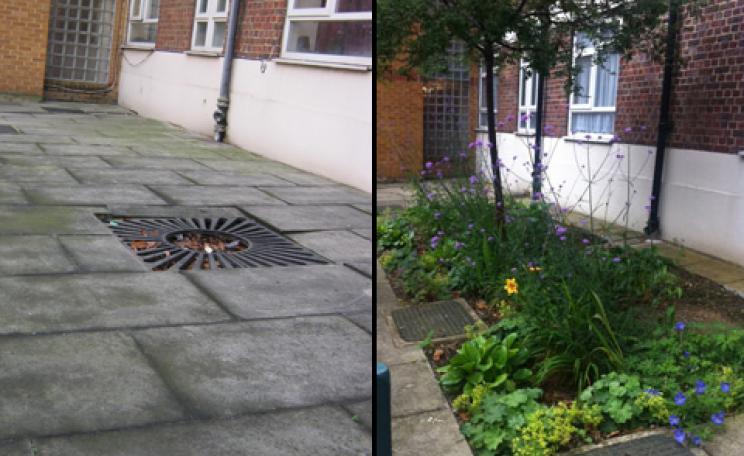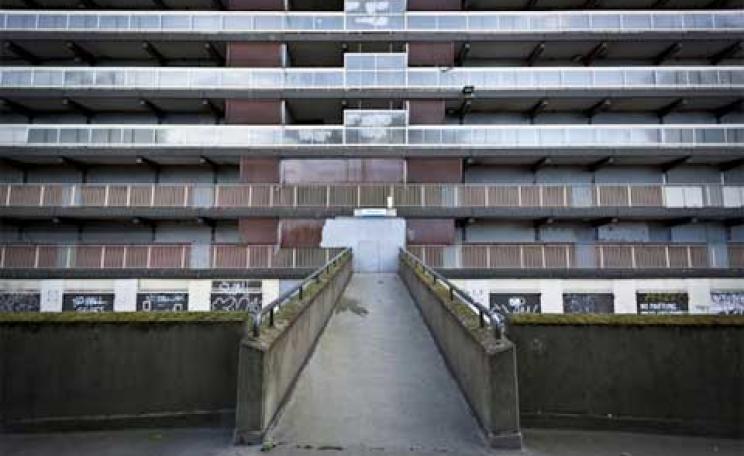Are your kids this happy on their way to school? Cycling on traffic-free green ways, Bristol (© Jon Bewley/Sustrans)
With the kids settled in for a new year at school, now is the perfect time to start considering how you get them there. We know the school run contributes significantly to congestion, and traffic levels at peak times can make it feel like a war of attrition. In the UK approximately 32 per cent of pupils are driven to school, and one quarter of all school journeys made by car are under half a mile.
A school travel plan aims to reduce car journeys to and from school by identifying barriers to healthier alternatives, and seeking to remove them, while encouraging the use of ‘active travel'.
The creation of school travel plans was promoted by councils keen to reduce traffic and meet local health targets. However, funding cuts snapping at the heels of local authorities' budgets means community involvement is more important now than it ever was.
School travel plans aren't a new idea - approximately 90 per cent of UK schools now have one - but according to Paul Osborne, project director of school travel for sustainable transport charity Sustrans, while a lot of support has gone into writing these plans, much more needs to be done to turn them into real outcomes.
Roads around schools still need to be made safer, and on top of the environmental benefits parents need to understand that children who walk and cycle are better off in terms of overall health.
'We have a lot of anecdotal evidence that children who walk and cycle are a lot more alert when they arrive at school. There are lots of studies that show the more physically active children are, the better they do academically,' he says.
However, many parents still feel unsafe travelling without the protection of a tonne or two of metal around them. According to Georgie Burchell, Hackney Council's school travel advisor, school travel plans can tackle these fears, making the school run safer by reducing car journeys, as well as incorporating National Curriculum and Healthy Schools targets. At the same time they can equip children with healthy habits that could last a lifetime, tackling obesity and social exclusion.
 How do you get involved?
How do you get involved?
Contact your child's teacher or headteacher. Each school with a travel plan will have a School Travel Plan Champion. This can be a teacher or parent, and is the first point of contact on sustainable transport. Deadlines for new school travel plans usually fall around March or April.
Sustrans recommends you start by setting up a working group, or if one already exists, volunteer to join. This can comprise teachers, parents and pupil representatives.
Get in touch with the local authority, most of whom employ a school travel advisor, providing invaluable advice and support on funding and grants. Although some of these roles and government grants may be cut next year, many boroughs still offer small grants for sustainable travel measures, and every local authority has some kind of travel plan and a road safety or sustainable travel team who can provide advice.
Initially look at your school, its pupil numbers and types, and catchment area. Then take surveys of how pupils and teachers get to school to measure whether progress has been made from the original travel plan. If no progress has been made, ask why not. Needs change as pupils join and leave, and regularly reviewing travel plans will help reflect this.
Overcoming barriers to better school transport
The most common reason for not cycling to school, for example, is the lack of safe cycle racks. Advice on how to get funding for cycle storage can be obtained from the London Cycling Campaign.
Talk to local residents. By changing attitudes in neighbourhoods, you can make a huge difference around the school. Paul Osborne adds that teachers can lead by example, too, by walking and cycling themselves.
If people drive on busy roads every day it is easy to overlook the local walking and cycling routes, and you can make parents aware of these.
Hold workshops or use school events to talk to parents about travel issues. Georgie Burchell says: 'Travel advisors can help with any issues with travelling to school, such as bullying or crime fears, as they often have contacts with learning trusts and school safety teams.'
Sustrans provides a toolkit with survey templates here to identify common barriers to cycling and walking, and help you create targets to work towards - anything from decreasing car use by 20 per cent to doubling cycling. You may decide cycle training is the way to go, or cycle clubs with repair workshops, or bag storage for those who would like to walk.
Cycling England runs cycle training courses for schools, which used to be cycling proficiency but are now known as Bikeability.
Paul Osborne says: 'It is about people doing things together. I have seen schools close the road to traffic for a day to give people a sense of what it could be like if they changed their behaviour permanently.'
Local authorities also run schemes such as Walk once a Week to encourage regular active travel, and you can use these to promote your travel plans, as well as events such as Bike Week.
For each objective, set out a timeframe (start and end dates), and identify how this will be funded (whether you need to apply for funding or not) and whether bodies such as the local council or bus service will need to take action, such as providing services that will encourage people to use public transport or safer pedestrian crossings.
As the project progresses, try to remain flexible - things may change. Review your targets and review the project to see how it could better reflect the needs of the people who will use it.
Further information
Living Streets run a Walk to School Week in May and Walk to School Month in October
Sustrans provides information on how to create a school travel plan here and TfL (Transport for London) here. Se-ed provides a good site for funding advice here
Examples of some school travel plans can be found here
For a general resource on sustainability in schools, see here
Laura Laker is a freelance journalist
Photo credit: School children walking to school in Southampton (© Jon Bewley/Sustrans)
| READ MORE... | |
 |
HOW TO MAKE A DIFFERENCE How to green your school School buildings, food, waste - even the curriculum itself should all support a connection to, and appreciation for, the environment. Here are some resources to get you started |
 |
HOW TO MAKE A DIFFERENCE How to campaign for better school food All you need to know to get fresher, healthier and greener food into your child's school - from nurseries to primary and secondary schools |
 |
GREEN LIVING The art of bike maintenance: trouble shooting squeaks and creaks This extract from The Ultimate Guide to Bicycle Maintenance will help you identify the source of, and fix, nasty noises |
 |
HOW TO MAKE A DIFFERENCE A school built for green education The newly opened Langley science academy in Slough ticks just about every box - airy, light, modern interiors make for good learning environments, and the school building is stuffed full of eco features |
 |
GREEN LIVING Pedal power: ditch the headaches and cycle to work Commuting to work by bike is easier - and the reasons not to do it flimsier - than you think. Here's our guide to dealing with the excuses and improving pedal power in your workplace |








